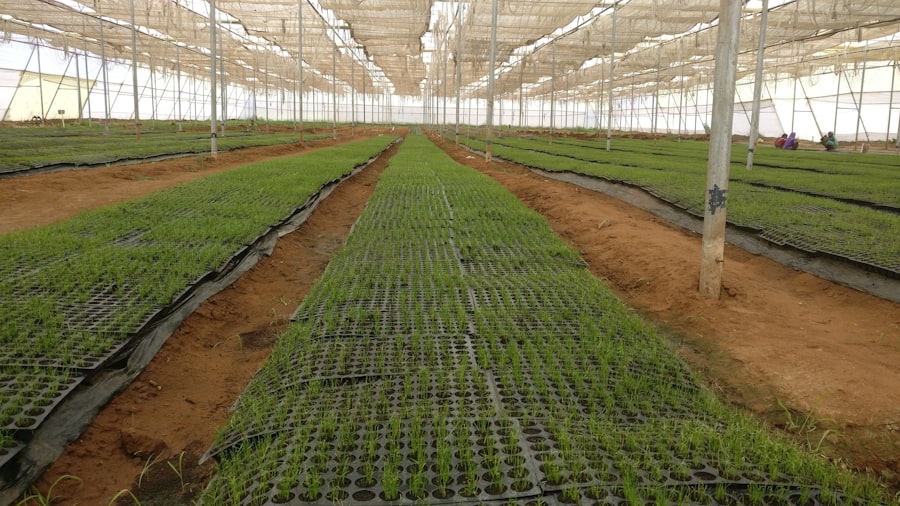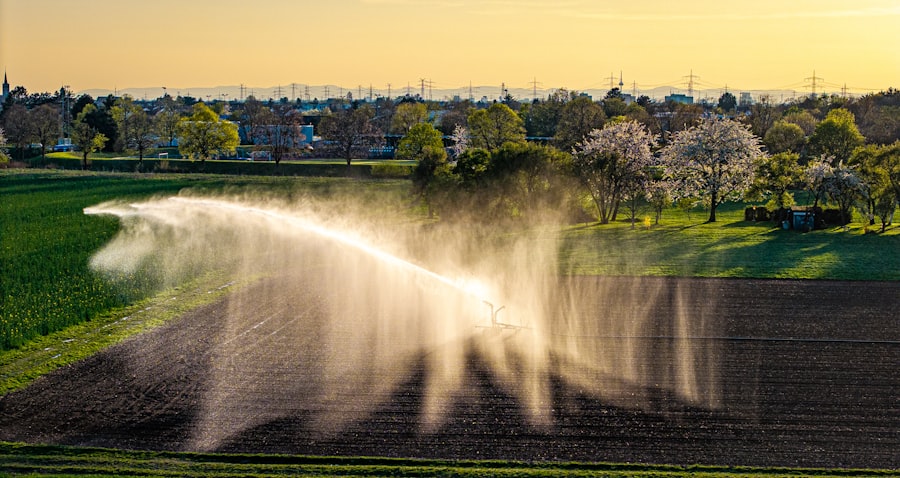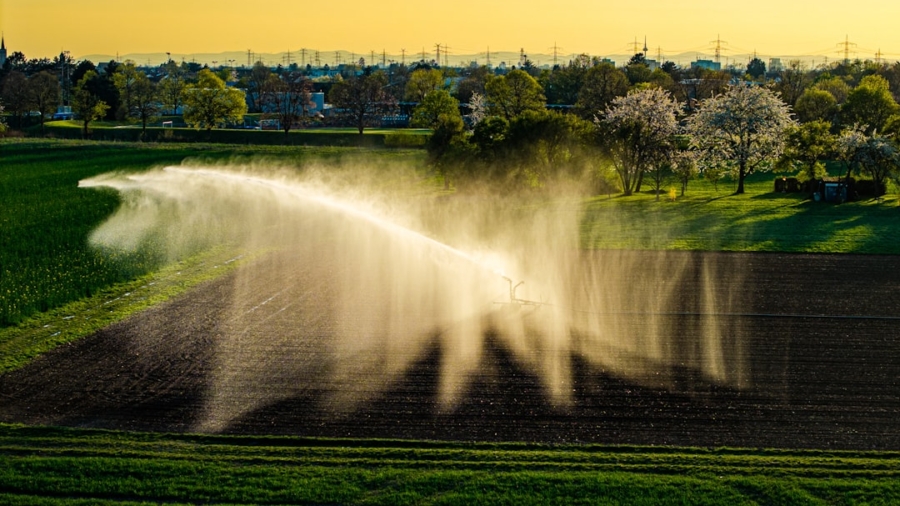In an era marked by increasing water scarcity and the pressing need for sustainable agricultural practices, smart irrigation systems have emerged as a pivotal solution. These systems are designed to optimize water usage, ensuring that crops receive the right amount of moisture while minimizing waste. As global populations continue to rise, the demand for food production intensifies, placing additional strain on already limited water resources.
Smart irrigation systems not only address these challenges but also contribute to environmental conservation by reducing runoff and promoting efficient water management. Moreover, the significance of smart irrigation extends beyond agriculture.
With climate change leading to unpredictable weather patterns, traditional irrigation methods often fall short in meeting the varying needs of plants. Smart irrigation systems adapt to real-time conditions, ensuring that landscapes remain vibrant and healthy while conserving precious water resources. This adaptability is crucial in a world where droughts and floods are becoming increasingly common, making smart irrigation a vital component of modern water management strategies.
Key Takeaways
- Smart irrigation systems are important for efficient water usage and conservation in agriculture and landscaping.
- These systems work by using sensors and weather data to adjust watering schedules and amounts based on real-time conditions.
- The benefits of smart irrigation systems include water savings, cost savings, and improved plant health.
- There are different types of smart irrigation systems, including weather-based, soil moisture-based, and drip irrigation systems.
- When choosing a smart irrigation system, factors to consider include the size of the area, soil type, plant type, and budget.
How Smart Irrigation Systems Work
Smart irrigation systems utilize a combination of sensors, weather data, and automated controls to deliver precise amounts of water to plants. At the core of these systems are soil moisture sensors that monitor the moisture levels in the ground. These sensors provide real-time data, allowing the system to determine when and how much water is needed.
In addition to soil moisture sensors, many smart irrigation systems incorporate evapotranspiration (ET) data, which measures the rate at which water evaporates from the soil and transpires from plants. By analyzing ET rates alongside soil moisture levels, these systems can fine-tune their watering schedules to match the specific needs of different plant species.
This level of precision not only conserves water but also promotes healthier plant growth by ensuring that roots receive adequate moisture without becoming waterlogged.
Benefits of Smart Irrigation Systems

The advantages of implementing smart irrigation systems are manifold, particularly in terms of water conservation and cost savings. One of the most significant benefits is the reduction in water usage. Studies have shown that smart irrigation can reduce water consumption by up to 50% compared to traditional methods.
This reduction is particularly crucial in regions facing severe drought conditions or where water resources are limited. By using technology to optimize watering schedules, farmers and homeowners can significantly decrease their reliance on municipal water supplies. In addition to conserving water, smart irrigation systems can lead to substantial cost savings over time.
By minimizing water waste, users can lower their utility bills while also reducing the need for fertilizers and pesticides. Overwatering can lead to nutrient leaching, which not only harms plants but also contributes to environmental pollution. By ensuring that plants receive only the necessary amount of water, smart irrigation systems help maintain soil health and reduce the overall environmental impact of agricultural practices.
Types of Smart Irrigation Systems
Smart irrigation systems come in various forms, each tailored to meet specific needs and applications. One common type is the drip irrigation system, which delivers water directly to the root zone of plants through a network of tubing and emitters. This method minimizes evaporation and runoff, making it highly efficient for both agricultural and landscaping purposes.
Drip systems can be easily integrated with soil moisture sensors to automate watering schedules based on real-time data. Another popular option is the sprinkler system equipped with smart controllers. These controllers can adjust watering times and durations based on weather conditions and soil moisture levels.
Some advanced models even connect to local weather stations or use satellite data to predict rainfall and adjust schedules accordingly. This flexibility allows homeowners and farmers to maintain lush landscapes or productive fields without wasting valuable resources.
Factors to Consider When Choosing a Smart Irrigation System
Selecting the right smart irrigation system requires careful consideration of several factors. First and foremost is the specific needs of the landscape or agricultural area being irrigated. Different plants have varying water requirements, so understanding these needs is essential for effective system design.
For instance, a vegetable garden may require more frequent watering than a xeriscaped landscape designed for drought tolerance. Another critical factor is the local climate and soil type. Regions with sandy soils may require more frequent watering due to rapid drainage, while clay soils retain moisture longer.
Additionally, understanding local weather patterns can help determine the best type of system for a given area. Users should also consider the initial investment costs versus long-term savings; while some smart irrigation systems may have higher upfront costs, their efficiency can lead to significant savings over time.
Installation and Maintenance of Smart Irrigation Systems

The installation process for smart irrigation systems can vary depending on the complexity of the system chosen. For simpler setups, such as basic drip irrigation systems or smart sprinkler controllers, homeowners may opt for DIY installation using readily available kits. However, more complex systems that require extensive sensor networks or integration with existing infrastructure may necessitate professional installation.
Once installed, regular maintenance is crucial to ensure optimal performance. This includes checking sensors for functionality, cleaning emitters in drip systems to prevent clogging, and periodically reviewing watering schedules based on changing weather conditions or plant growth stages. Many modern smart irrigation systems come equipped with self-diagnostic features that alert users to potential issues, making maintenance more manageable.
Case Studies of Successful Implementation of Smart Irrigation Systems
Numerous case studies illustrate the successful implementation of smart irrigation systems across various sectors. One notable example is the city of San Diego, California, which has adopted smart irrigation technology in its public parks and landscapes. By utilizing soil moisture sensors and weather-based controllers, San Diego has achieved a 30% reduction in water usage across its parks while maintaining lush greenery and vibrant flower beds.
In agriculture, a farm in Arizona implemented a smart irrigation system that combined drip irrigation with real-time soil moisture monitoring. The farm reported a 40% reduction in water usage while simultaneously increasing crop yields by 20%. This success story highlights how smart irrigation not only conserves resources but also enhances productivity, making it an attractive option for farmers facing increasing pressure from climate change and resource scarcity.
Future Trends in Smart Irrigation Technology
As technology continues to evolve, so too does the potential for advancements in smart irrigation systems. One emerging trend is the integration of artificial intelligence (AI) and machine learning algorithms into these systems. By analyzing vast amounts of data from various sources—such as weather forecasts, soil conditions, and plant health—AI-driven systems can make even more precise watering decisions than current technologies allow.
Additionally, the rise of Internet of Things (IoT) devices is set to revolutionize smart irrigation further. With interconnected devices communicating seamlessly with one another, users will have access to real-time data on their entire landscape or agricultural operation from a single platform. This level of connectivity will enable more efficient resource management and provide insights that were previously unattainable.
As urbanization continues to expand and climate challenges become more pronounced, the demand for innovative solutions like smart irrigation systems will only grow. The future promises not only enhanced efficiency but also a greater emphasis on sustainability as communities strive to balance development with environmental stewardship.
In the quest for sustainable living, smart irrigation systems have emerged as a pivotal innovation, optimizing water usage and enhancing agricultural productivity. These systems are part of a broader trend towards integrating technology into everyday life to promote sustainability. For those interested in exploring other technological advancements that can contribute to efficient resource management, the article on Best Software for Freight Forwarders 2023 provides insights into how software solutions are revolutionizing logistics and supply chain management. By streamlining operations and reducing waste, such technologies complement the goals of smart irrigation systems, fostering a more sustainable future.
FAQs
What is a smart irrigation system?
A smart irrigation system is a technology that uses sensors, weather data, and automation to optimize water usage for outdoor landscapes. It can adjust watering schedules based on real-time weather conditions and soil moisture levels, leading to more efficient and sustainable water usage.
How does a smart irrigation system work?
Smart irrigation systems use sensors to monitor soil moisture, weather conditions, and plant water needs. This data is then used to automatically adjust the watering schedule and duration, ensuring that plants receive the right amount of water at the right time.
What are the benefits of using a smart irrigation system?
Some of the benefits of using a smart irrigation system include water conservation, reduced water bills, healthier plants, and convenience. By optimizing water usage, smart irrigation systems contribute to sustainable living and environmental conservation.
Are smart irrigation systems cost-effective?
While the initial investment in a smart irrigation system may be higher than traditional irrigation methods, the long-term cost savings from reduced water usage and lower maintenance can make it a cost-effective choice for homeowners and businesses.
Can smart irrigation systems be integrated with other smart home technologies?
Yes, smart irrigation systems can be integrated with other smart home technologies such as weather stations, soil moisture sensors, and smart controllers. This integration allows for a more comprehensive and automated approach to outdoor water management.

